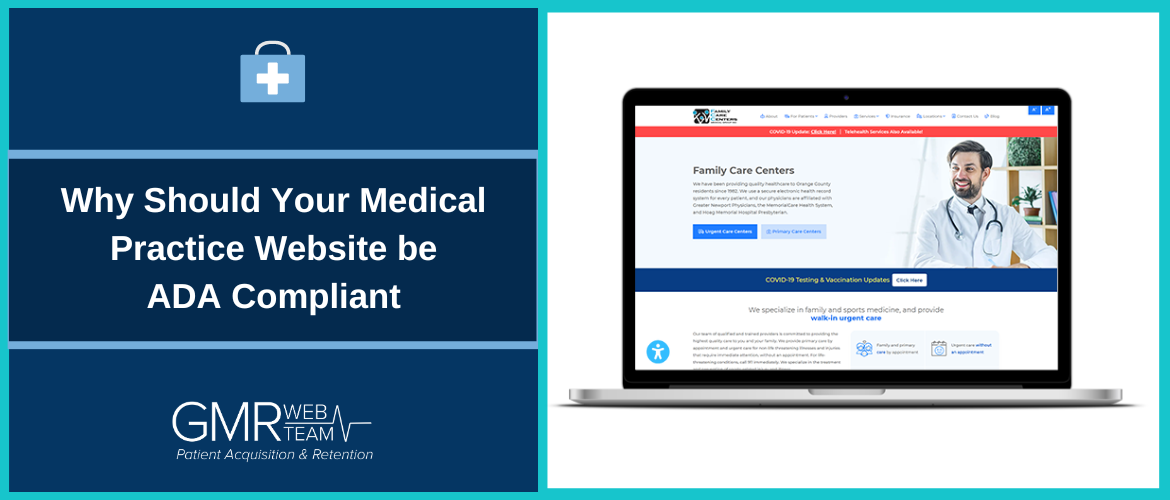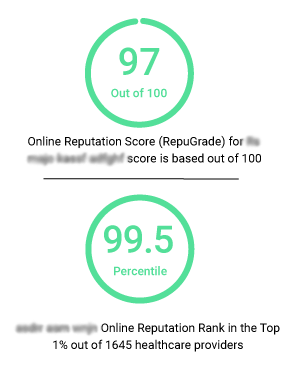Why Should Your Medical Practice Website be ADA Compliant

Medical practices now have an extended reach through the power of the internet. Patients can explore various medical services, book appointments, and communicate with physicians through online platforms. Despite improvements in the online sphere of medical practices, neglecting website accessibility for people with disabilities implies excluding numerous potential patients who require medical care.
According to CDC, up to 1 in 4 (26 percent) adults in the United States have some type of disability. That being said, as a healthcare professional, you likely have some important questions by now. Similar to how you wouldn't want to discriminate against anyone from accessing your physical clinic, the same principle should apply to your healthcare website.
With the recent surge in ADA web accessibility lawsuits aimed at healthcare providers, prioritizing accessibility has become an increasing absolute must.
Understanding What is ADA Compliance for Medical Practice Websites
ADA compliance refers to adherence to the regulations outlined in the Americans with Disabilities Act (ADA) of 1990, a federal law prohibiting discrimination based on disability. Specifically, ADA compliance for medical practice websites refers to ensuring that the website can be accessed and used by people with disabilities, including those with visual, auditory, cognitive, or motor impairments.
ADA compliance for medical practice websites is legally required but also is beneficial in being more ethical and inclusive. By ensuring that your website is accessible to everyone, your practice can reach a broader audience and provide equal care to all patients.
Why It's Necessary to Have an ADA-Compliant Website in This Digital Age?
A medical website accessible to every individual regardless of the background can attract a broader audience and increase engagement with potential patients. Moreover, accessible websites can improve search engine optimization (SEO) and make it easier for people to find and locate a healthcare business online.
It is necessary to have an ADA-compliant website in this digital age for several reasons. First and foremost, it is a legal requirement under the Americans with Disabilities Act (ADA) of 1990, which prohibits discrimination against individuals with disabilities in all areas of public life, including online. Failure to comply with these regulations can result in costly lawsuits, damage to a business's reputation, and loss of potential customers. Overall, having an accessible website can provide a business with a competitive advantage.
Additionally, having an ADA-compliant website ensures that all individuals can access and interact with the website's content regardless of their abilities. With the increasing reliance on digital platforms for information and services, it is crucial to ensure everyone can access such information, including those with disabilities.
How to Ensure Your Medical Website is ADA Compliant
There are several ways to check and ensure that your website is ADA-compliant:
# Conduct an accessibility audit:
An accessibility audit is a comprehensive review of your website's design and content to identify any accessibility issues. You can hire an accessibility consultant or use automated accessibility testing tools like WAVE, Axe, or Lighthouse to perform an audit.
# Review ADA compliance guidelines:
Familiarize yourself with the ADA compliance guidelines and ensure that your website adheres to them. The Web Content Accessibility Guidelines (WCAG) 2.1 provide detailed instructions on how to make websites accessible to people with disabilities.
# Test with assistive technologies:
Use screen readers, voice recognition software, or keyboard-only navigation to test your website's accessibility. It will give you a better understanding of how users with disabilities interact with your website.
# Conduct user testing:
Ask individuals with disabilities to test your website and provide feedback on its accessibility. It can provide valuable insights into how users with disabilities navigate and use your website.
Tips on How to Make Your Medical Website ADA Compliant
Here are some essential strategies for improving ADA compliance on your healthcare website:
#1. Text Size
About 8.1 million individuals in the US have a vision impairment, and they may rely on screen readers or magnifiers to access your website's content. To ensure that your site is accessible to these individuals, make sure that the text can be resized up to 200% without using assistive technology.
#2. Color Accessibility
Avoid using color as the only way to convey information to accommodate individuals with color vision deficiencies or visual impairments. For example, if your site states that "required fields are in red," provide an alternative way of indicating required fields for users who may not see the color red. Additionally, test your site's color contrast to ensure all elements are easily readable. Several free tools can help you test your color accessibility and choose appropriate color palettes, such as Pika and iOS Color Contrast Checker.
#3. Closed Captions
Approximately 15% of American adults have some degree of hearing loss. To make your website's video content accessible to these individuals, provide closed captions that display the spoken words. When adding captions, ensure they appear at the bottom of the screen rather than obscuring critical visual features.
#4. Alt Tags
For individuals with visual impairments, alt text describes images used on your website. When adding alt text, keep the description brief, with less than 250 characters per image. Avoid including unnecessary information like copyright details or phrases like "image of" or "picture of."
#5. Keyboard Navigation
For individuals with motor impairments, navigating a website using a keyboard can be easier than using a mouse. To make your site navigable by keyboard, ensure that users can jump between focusable elements using the Tab, Enter, and Arrow keys. Ensure that the order of focusable elements follows the order in which they appear in the document's source code.
#6. Accessibility Widgets
Accessibility widgets aid in achieving ADA compliance by helping users with disabilities access websites. Widgets, such as adjustable text size or keyboard navigation, can be helpful. While widgets alone don't guarantee compliance, they're an important part of an overall accessibility strategy that includes proper markup, clear content, and user testing.
Make Your Website ADA Compliant with GMR Web Team
ADA compliance can be a challenging, thought-provoking, and time-consuming task, but at GMR Web Team, we have a team of website design experts who specialize in this area. We can ensure that your website is continually up-to-date and in compliance with the ever-evolving regulations. As professionals, we have the experience and expertise to navigate the complexities of healthcare website design, including the importance of maintaining ADA compliance. We would be delighted to collaborate with you - contact us to learn more about our digital marketing solutions.
Comments are closed


